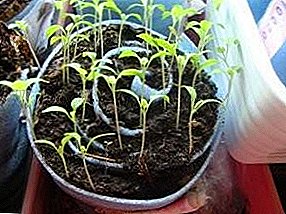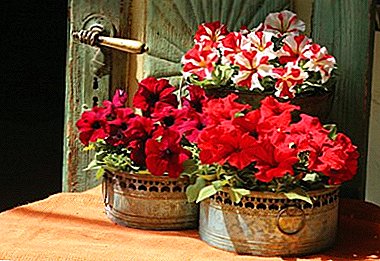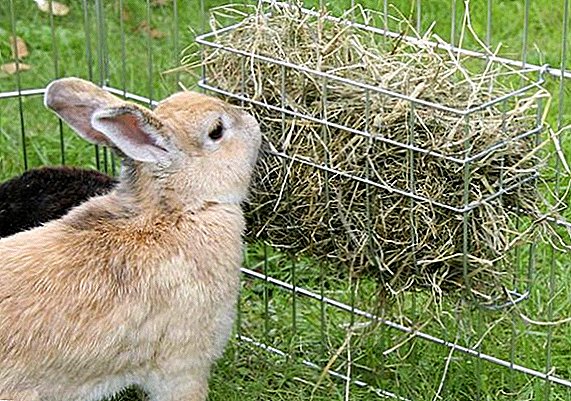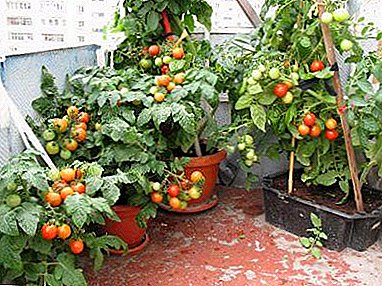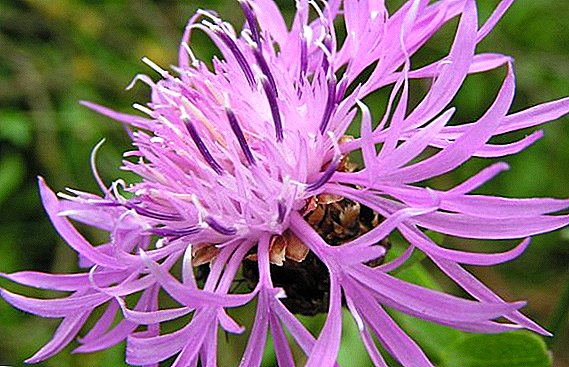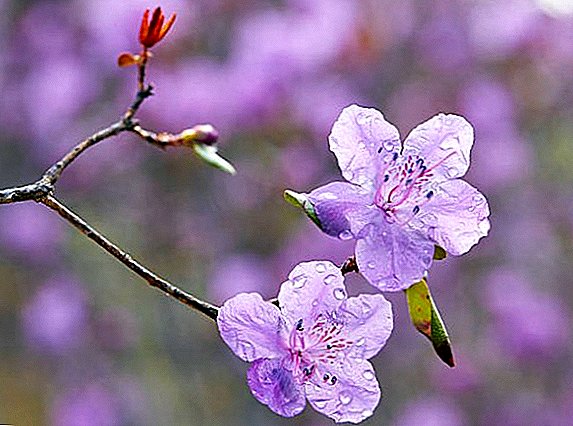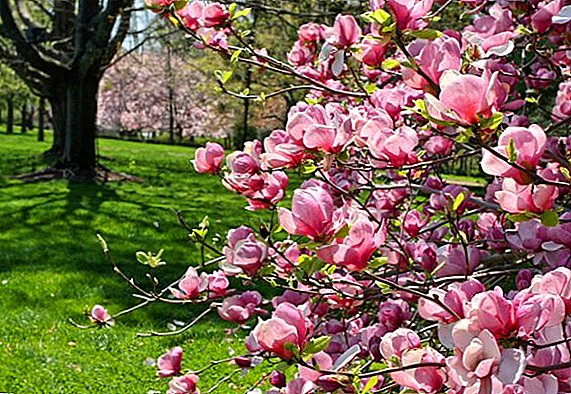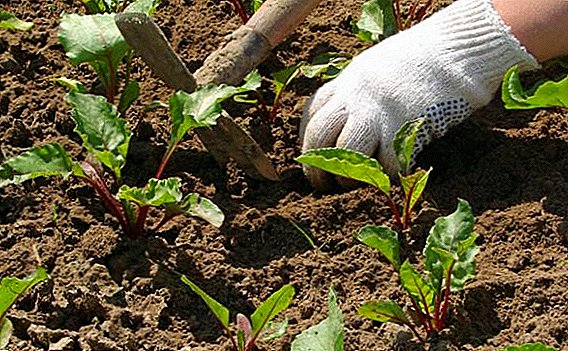 Each plant requires attention. He needs to choose the right place, ground, take care of the preparation of seeds, do not forget to water and feed the plant. Beet is no exception. She, like any culture, needs care. But first you need to deal with its seeding.
Each plant requires attention. He needs to choose the right place, ground, take care of the preparation of seeds, do not forget to water and feed the plant. Beet is no exception. She, like any culture, needs care. But first you need to deal with its seeding.
When to plant beets in the spring in the open ground
First, we find out when and under what temperature conditions to plant beets.
Calendar dates
Beet loves warmth, so no need to hurry with her sowing. In addition, young shoots that have survived even small frosts are likely to shoot themselves. Therefore, the most suitable time for planting in open ground will be the end of April or the beginning of May.
Weather
Seeds germinate and at +7 ° C, but for proper development, you need about +16 ° C outside. At the same time the earth should warm up to +10 ° С. 
Features of the region
Regarding Of Ukraine The situation is this: the south the region, the earlier you can begin. But it all depends on the temperature of the air and the earth.
Beets in different areas Of Russia landed at different times:
- North Caucasus - 1st decade of April;
- Central Black Earth Region - 3rd decade of April;
- north of the Central Chernozem region, Nechernozemie, Volga region, Bashkortostan, Altai, Moscow region - 1st decade of May.
In the southern regions, due to the warm climate, it is possible to engage in landing from the end of March. After all, there the earth warms up faster to the desired temperature.
By the way, beets can be planted in the fall (there are special varieties). This option is good for areas with a cool short summer. Landing occurs after the start of stable frosts, when the earth becomes covered with a crust. In the Urals or Siberia, the best period for this is November. There are no universal councils of how many such sowing should be done. The main thing - do not hold out until when the ground "grab" (it is 3-4 ° C below zero). Farmers noticed that the best reference point is when the cherry completely sheds its leaves.
Important! Consider: beet fall planting is not suitable for prolonged storage.
Where to plant
This culture loves lighted areas with fertile, loose ground, without high standing groundwater. A soil with a neutral reaction is best suited (pH - about 6-7).
Learn how to independently determine the acidity of the soil on the site, deoxidize the soil.
It is not recommended to plant beets in shaded areas with wet, acidic, compacted soils.  For better yields, this vegetable is advised. each year to land in a new place. It is better to return it to its former place no sooner than after 3-4 years.
For better yields, this vegetable is advised. each year to land in a new place. It is better to return it to its former place no sooner than after 3-4 years.
Plant beets don't advise for cabbage, carrots and tomatoes. And after the potatoes, cucumbers, radishes, peas, onions, garlic, it will feel great. It is also planted for winter wheat, rye.
For beets good neighbors carrots, celery, lettuce, spinach, white cabbage, kohlrabi, onion, garlic, radishes, cucumbers, strawberries will become.
Familiarize yourself with the peculiarities of vegetable crop rotation: what to plant afterwards, how to plan crops correctly.
Preparing the land in the fall
Land for spring planting needs to be prepared in autumn:
- clean the site, removing from it all the garbage, weeds, branches, plant residues;
- dig the ground up to 30 cm deep;
- fertilizer - for 1 m² need 30-50 g of phosphate and 50-70 g of potash.
In the spring (before sowing), the land will need to be re-digged and nitrogen fertilizers applied - 30-50 g per 1 m².
Video: autumn tillage
Do I need to pre-soak the seeds
Soaking the seeds is not necessary, but if you want them to sprout faster, then you should still do it.
To do this, take one of these tools:
- 1/4 tsp boric acid and 0.5 tsp. nitrophosphate or nitroammofoski;
- 1 tsp superphosphate;
- 1 tsp drinking soda;
- 1 tbsp. l wood ash.
For any of the funds needed 1 liter of warm water. Soak the seeds for a day. After that, rinse them, wrap with a damp cloth and save at room temperature for 3-4 days, watching that the package does not dry out.  If you plant seeds in the fall, there is no need to soak them.
If you plant seeds in the fall, there is no need to soak them.
Did you know? Beetroot was highly respected by the Romans, it was even charged as a tribute from subordinate Germans. Also, the Romans used a vegetable as an aphrodisiac.
How to plant beets in the spring seeds
Seeds are buried shallowly in the ground - by 2-3 cm (if the soil is sandy or sandy - by 3-4 cm).
If you want to get small fruits, for example, for canning, make at least 7 cm between rows, and leave no more than 6 cm between individual plants. If you need large beets, increase the distance between rows to 30 cm, between plants - to 10 cm
Video: spring planting beets
Care features
Next, let's figure out how to properly care for this vegetable - water, fertilize, mulch.
Find out what to do if the beets do not sprout.
Watering
In the first 1.5 months after planting it is impossible for the soil to dry out. Also, young beets like sprinkling in the evenings.
If the summer is not very hot, the beets will not cause much concern. After closing the tops, the moisture between the rows will dry out more slowly, and the vegetable will be able to remove it from the deep layers of the earth. Therefore, she will not need water too often.
Watering stops completely about three weeks before harvesting. 
Thinning
To give the sprouts enough space for development, you need do thinning twice: in the phase of two true leaves (do not forget to leave a gap between the sprouts of 3-4 cm) and in the phase of 3-4 leaves. On average, between plants, as a result, 10-20 cm remains.
Important! Remote plants do not have to throw out, they can be transplanted to another place - they will take root without any problems and quickly catch up with their fellows. The main thing - before the procedure it is good to spill the soil where you will move the new sprouts, and transplant carefully so as not to damage the roots.
Soil care
The land where beet grows must not only be moistened, but also loosen, because it is impossible to form a crust on the ground. This is especially important for young shoots.
Loosen carefully when the plants are still small, you can use an old fork. Use this procedure until the leaf closure. Also during loosening, by all means tear out the weeds.  Remember and about mulch. After the first thinning and weeding, the ground next to the young stock should preferably be mulled with fine organic material. If you ignore it, you will have to weed and loosen much more often, and water, too. At the beginning, the layer of mulch should be small - 1-2 cm, but with the growth of plants it is necessary to increase it, using coarser mulch, for example, weeded and straw cutting.
Remember and about mulch. After the first thinning and weeding, the ground next to the young stock should preferably be mulled with fine organic material. If you ignore it, you will have to weed and loosen much more often, and water, too. At the beginning, the layer of mulch should be small - 1-2 cm, but with the growth of plants it is necessary to increase it, using coarser mulch, for example, weeded and straw cutting.
Top dressing
Top-dressing with mineral fertilizers (nitrogen) occurs after thinning, the following (complex) - after closing the tops.
Nitrogen, potassium, phosphorus - the main components that are needed beet. It is allowed to replace the mineral fertilizer complexes with ash mixed with compost (3 items of ash per 1 m²).
Learn more about the features of feeding beet in the open field for the growth of the root.
It is recommended to add nitrogen in several doses, without overdoing it in this matter, because its excess will provoke the accumulation of nitrates in fruits. Partial injection reduces negative results. The best option is urea (10 g per 1 m²).  The following dressing (vegetable then reaches the size of a walnut) - from potassium-phosphorus mixtures (8 g of superphosphate, 10 g of potassium chloride per 1 m²). Nitrogen is not necessary here.
The following dressing (vegetable then reaches the size of a walnut) - from potassium-phosphorus mixtures (8 g of superphosphate, 10 g of potassium chloride per 1 m²). Nitrogen is not necessary here.
If in the earth there is boron deficiency, the beets will react by rotting the core. Adversely affected lack of copper and molybdenum, it is filled with foliar top dressing (in the phase of 10 leaves). Here liquid microfertilizers suitably saturated with boron in organomineral form and manganese - in chelate.
If the beets grow poorly, round yellow traces appear on the leaves - these are manifestations lack of potassium and very acidic land. There needs a special watering: 200 g of lime fluff and 80 g of potassium chloride in 10 liters of water. Means is enough for 10 running meters (along a line).
If the tops are red, this is a lack of sodium. Sprinkle the beds with ash and sprinkle with salt water (1 tbsp. Salt per 10 liters). Plus, it will increase the sugar content of the vegetable.
Did you know? Beet - one of the natural antidepressants and anabolic steroids. If you drink beetroot juice every day, it will greatly increase your stamina and reduce fatigue.
Harvesting and storage of the crop
Gather beets when its leaves turn yellow and dry. Usually this is the end of August or the first half of September (certainly with dry weather). Fruits gently break in with a shovel or pitchfork, then take it out with their hands, shake off the ground, cut the tops. Petioles should remain no more than 1.5 cm.  If it is impossible to carry the beets into a permanent room right away, dig up piles in the field and place the fruits poured with earth in 2-3 layers, once again filling them with soil. But try to move the vegetables to a permanent room as soon as possible.
If it is impossible to carry the beets into a permanent room right away, dig up piles in the field and place the fruits poured with earth in 2-3 layers, once again filling them with soil. But try to move the vegetables to a permanent room as soon as possible.
The most favorable conditions - a room with a temperature of 0-2 ° C and humidity of 90%. As a rule, cellars are used, where beets are successfully stored near the potatoes. It is kept in boxes, containers, open plastic bags or ordinary bulk.
If the apartment has no space for storing beets, it can be dried or frozen.
Selected large and medium beets are treated with chalky powder (2 kg per 100 kg of fruits) and put layers of tops outside, sprinkling with moist sand, peat, sawdust or 2-3 cm thick chips. With poor ventilation, these vegetables are kept in small embankments, and cover the top with straw (to avoid condensation).
Video: storage of beets in the sand
Reviews gardeners
According to experience, the timing of planting beets in spring in open ground varies depending on the weather in the current year and the variety. But I prefer to plant beets in a seedling way, although this is a more labor-intensive process, but this is how I get a crop earlier than by sowing it in the ground, and the planting material is more economical. In the middle of April I will sow the seeds for seedlings, and I will plant them in the ground when 4-5 leaves appear.volgaga
//www.agroxxi.ru/forum/topic/6935- planting- beetroot-spring / #entry27767
The best soil t for sowing is + 10-12 С, but it is possible even at +8 С, we sow to a depth of 2 cm to 4 cm, depending on the soil. Beets do not like sour soils, so when I cook a garden (preferably in the fall) I use crushed egg scoop. We carry out thinning in the phase of 2-3 true leaves, between seedlings we leave 6-8 cm, depending on the variety. If you have a "Cylinder", then we leave less space between the plants, "Cylinder" is an early summer variety. Such varieties as "Egyptian" and "Red Ball" are larger, you can leave a distance of 10 cm between them. You can feed them with a solution of ash and table salt (2 cups of ash and 1 tsp of salt per bucket of water. When you have arranged your garden bed, Do not throw away what you pulled out, this seedling can be planted on a new garden bed prepared in advance and this should be done in cloudy weather. spill 2 times per season.Mandrake
//www.forumhouse.ru/threads/13094/
As for irrigation, the beet is demanding of moisture, it is mandatory for it to be pre-sown and after sowing irrigation. She needs moisture both during the growing season and during the intensive formation of root crops.Tatuniki
//www.forumhouse.ru/threads/13094/
Beet - the vegetable that is easiest to store. No cellar or cellar? Not scary. It is perfectly preserved in any cool rooms (not above +4). Before putting it in storage, I slightly dry the roots in the air, preliminarily, of course, cutting the tops, or rather, leaving no more than 2 cm. It will be useful to sort the crop, remove sick, damaged, very small and too large root crops ... And I also noticed that small roots with a diameter of 5-10 cm are most securely stored (large ones contain voids, and the taste is not the same). To save space, the beets I put in small, low boxes with openings for air access. And I set them on top of each other on stands (15-20 cm above the floor), but I don’t move them close to the wall.swiridus
//www.forumhouse.ru/threads/13094/page-2
As you can see, beets are not so naughty vegetables. If everything is done correctly, then it will not bring you much care. But a lot of good - certainly! So feel free to plant it on your site and then enjoy delicious dishes throughout the winter.


